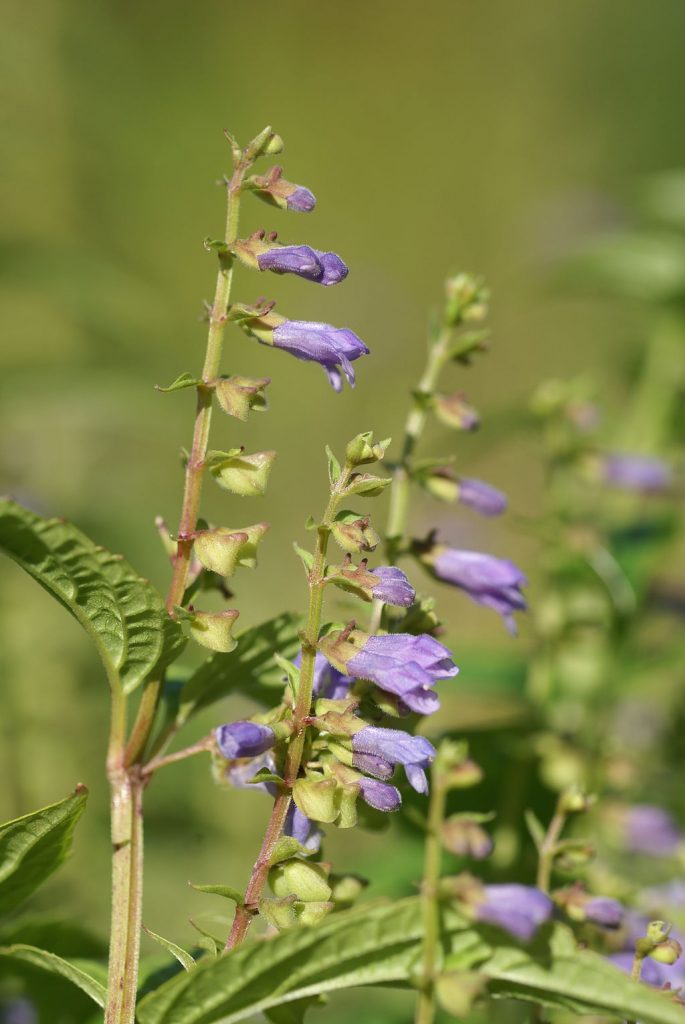 The hydroxycinnamates are polyphenols found in plants, including coffee, fruit and certain herbs. Hydroxycinnamates, like many polyphenols, have been shown to possess anti-anxiety effects. Coumaric acid is a hydroxylated derivative of cinnamic acid and is found in foods in three forms, o-coumaric acid, m-coumaric acid, and p-coumaric acid. These forms differ in the position of the hydroxyl group on the phenol ring. Forms of coumaric acid are found in a number of commonly eaten foods including peanuts, carrots, tomatoes, navy beans, wine, vinegar, port, sherry, basil, honey (in the pollen component) and the herb skullcap. Coumaric acid is bioavailable in humans and animals. Like all hydroxycinnamates, coumaric acid is thought to confer antioxidant protection in humans and animals. This antioxidant effect may give general protection from degeneration in the brain tissue, and this may subsequently help stabilise mood. Evidence shows that oxidative stress is associated with anxiety and depression.
The hydroxycinnamates are polyphenols found in plants, including coffee, fruit and certain herbs. Hydroxycinnamates, like many polyphenols, have been shown to possess anti-anxiety effects. Coumaric acid is a hydroxylated derivative of cinnamic acid and is found in foods in three forms, o-coumaric acid, m-coumaric acid, and p-coumaric acid. These forms differ in the position of the hydroxyl group on the phenol ring. Forms of coumaric acid are found in a number of commonly eaten foods including peanuts, carrots, tomatoes, navy beans, wine, vinegar, port, sherry, basil, honey (in the pollen component) and the herb skullcap. Coumaric acid is bioavailable in humans and animals. Like all hydroxycinnamates, coumaric acid is thought to confer antioxidant protection in humans and animals. This antioxidant effect may give general protection from degeneration in the brain tissue, and this may subsequently help stabilise mood. Evidence shows that oxidative stress is associated with anxiety and depression.

The herb skullcap (Scutellaria lateriflora) is known to possess significant anti-anxiety effects in humans and animals. Studies have investigated the phytochemical composition of skull cap and found that it possesses significant concentrations of coumaric acid. Therefore coumaric acid may contribute to the anti-anxiety effects of skullcap. Image is of a skullcap plant. Image from : By Rolf Engstrand (Own work) [CC BY-SA 3.0 (https://creativecommons.org/licenses/by-sa/3.0)], via Wikimedia Commons.
However, hydroxycinnamates may also directly affect neurotransmitter systems in the brain and this may also provide mood elevating benefits. In particular, hydroxycinnamates may interact with the GABA system, and this may provide calming effects that reduce anxious behaviour. For example, in one study, researchers investigated the effects of coumaric acid on the GABA system using a cell culture model. The results of this study showed that coumaric acid was able to bind to the benzodiazepine receptors in the cells and activate the GABAergic system. Addition of the GABA blocking drug picrotoxin significantly inhibited this activation, supporting the contention that the coumaric acid had activated the GABA system. Once the benzodiazepine receptor in the brain is activated, the neurotransmitter GABA is released. The release of GABA is known to induce calm by reducing the excitability of other neurotransmitter systems. Other hydroxycinnamates such as chlorogenic acid may affect this system.
If coumaric acid is able to activate the GABA system it might be expected that administration of coumaric acid to animals would have a calming effect. Studies have shown that oral administration of coumaric acid to rats induiced significant anti-anxiety effects when the rats were exposed to experimental stress. Administration of courmair acid produce effects in the rats that were in line with the effects seen from administration of the benzodiazepine drug diazepam. As diazepam affects the GABA system through activation of the benzodiazepine receptor, this is further evidence that coumaric acid works via this mechanisms. The authors also reported a U-shaped dose response curve for the coumaric acid, something that is commonly seen in phytochemicals that interact with tissue systems. Therefore understanding the amount of coumaric acid that is required to have effects against anxiety might involve a certain amount of trial and error based on body weight and other metabolic factors.
Eat Well, Stay Healthy, Protect Yourself
RdB
